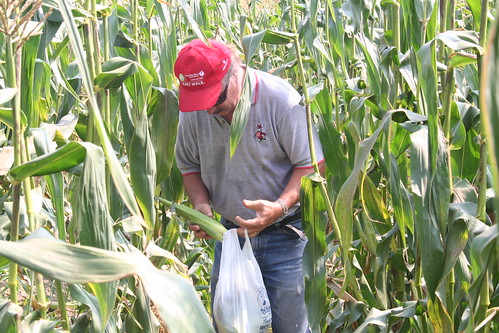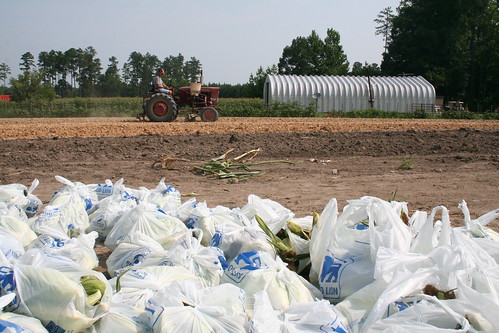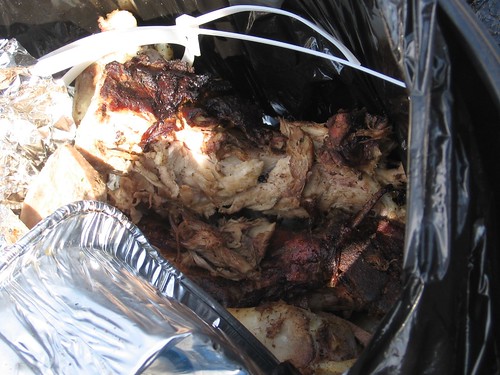Katy Wolk-Stanley is…The Non-Consumer Advocate. The hyphen-happy Portland native blogs about living on less and doing so with a minimal environmental impact. She was kind enough to share some thoughts on how she reduces food waste in her home. Take it away, Katy:

With food prices so high, there’s simply no excuse for food waste in the home. Regular readers of The Non-Consumer Advocate already know that the food waste issue is near and dear to my heart. Two years ago, I issued a Waste No Food Challenge and have been working ever since to get my family down to a zero food waste existence. I have learned much in my quest to eradicate food waste, and here’s what’s working for my family so far:
Be realistic: It’s all fine and admirable to fill your grocery cart with tofu and bok choy, but if that’s not how your family actually eats, then it’s just a recipe for wastage.
Serve smaller portions: This is especially important with children, but can be a issue with adults as well. It’s perfectly okay to have seconds, so make those servings appropriate to each individual.
Stop cooking such huge amounts: Face facts, you’re not an army cook. When cooking meals, estimate the amount of leftovers that’ll be produced and use your head. Leftover chicken soup is good once or twice, but after that it’s not always so tempting.
Buy smaller amounts: Many foods are less per pound if you buy a larger amount. However, unless you have a family of eight, this can be a certain road to food waste. It’s okay to buy the actual amount of food you need. I make pizza from scratch and buy the toppings from the pizza joint up the street. Not only is it cheaper, but I’m able to buy exactly the amount needed.
Only freeze the food you’ll want to eat again: Many people stash uneaten food in the freezer, only to be forgotten until that revolting smell of freezer burn has taken over. Which brings me to:
Eat the food in your freezer: When your freezer gets overly full of food, it becomes difficult to know the contents until it’s too late. Go on a spelunking tour of your freezer and start eating what you can. (The thriftiest meal comes from food you’ve already bought and prepared.)
Think about leftovers: When making a meal, think ahead to what the leftovers will be and how they’ll get eaten up. This may as simple as putting meal size portions into containers for work lunches, or even simply incorporating ingredients into another meal. For example, I roasted a chicken two nights ago. I used the extra chicken in some enchiladas last night, and then ate those leftovers for lunch today. If there’s more than you can eat, freeze the leftovers or share with friends and neighbors. (This is a delicious tradition to start, as you potentially end up on the receiving end of the deal!)
Plan Your Meals: For many people, this means scheduling the week’s menu ahead of time. I don’t do this personally, as I loosely follow the pantry principle, (I keep a stocked pantry that can be tranformed into multiple meals.) I usually plan my family’s meals a day ahead, which fits my personality better.
Store your food properly: If your flour gets buggy or your tortillas get crusty, then you have a problem. Stash dry goods in the freezer for 24 hours when first purchased to avoid moths and such, and use tight fitting lids for foods in the refrigerator. I’m a rabid fan of Pyrex dishes with snap-on lids. The glass means I can actually see the contents, and the lid keeps the food fresh. For me, monkey see food, monkey eat food. (Seriously, “out of sight out of mind” is my middle name.)
Institute a leftovers night: Often, there’s not enough of certain leftovers to create an entire meal, but they can be certainly be warmed up and set out buffet style.
Teach yourself to create new meals from leftovers: I’ve written about tucking bits and pieces into a pasta salad, but soups and burritos also lend themselves to leftover magic.
What are your methods to avoid food waste? Please share your ideas in the comments section below.




